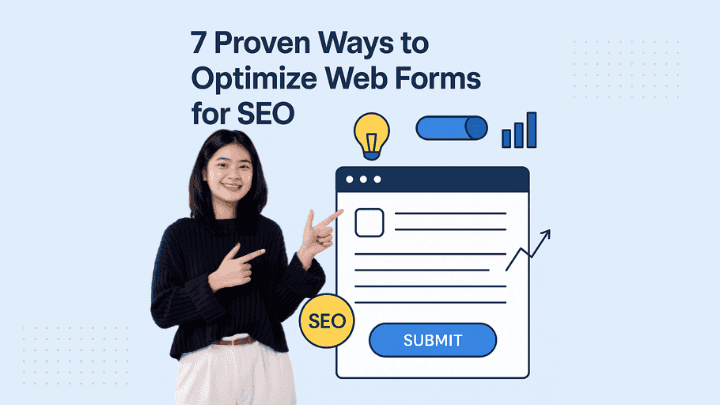🎉 Launching Offer: Get 50% OFF to join Yupform – Limited Time Only!

In the digital landscape of 2025, web forms are more than just tools for data collection—they're pivotal elements that influence user experience and search engine rankings. Optimizing your web forms can lead to improved engagement, reduced bounce rates, and enhanced SEO performance.
1. Implement Semantic HTML
Utilize semantic HTML elements like <form>, <label>, <input>, and <button> to ensure that search engines can accurately interpret your form structures. Proper labeling and structuring enhance accessibility and SEO.
2. Optimize Form Load Times
A slow-loading form can deter users and negatively impact your site's SEO. Ensure that your forms are lightweight, minimize the use of heavy scripts, and leverage asynchronous loading where possible.
3. Ensure Mobile Responsiveness
With the majority of users accessing websites via mobile devices, it's crucial that your forms are responsive. A mobile-friendly form enhances user experience and is favored by search engines.
4. Incorporate Relevant Keywords
Integrate pertinent keywords into form titles, descriptions, and placeholders. This not only aids users in understanding the form's purpose but also boosts SEO by aligning with search queries.
5. Utilize Clear and Concise CTAs
Your call-to-action (CTA) buttons should be descriptive and action-oriented. Phrases like "Download Your Free Guide" or "Subscribe for Updates" provide clarity and can improve click-through rates.
6. Implement Schema Markup
Adding structured data to your forms can help search engines better understand the content and purpose of your forms, potentially leading to rich snippets in search results.
7. Regularly Test and Update Forms
Continuously monitor your forms for usability issues, broken links, or outdated information. Regular updates ensure optimal performance and user satisfaction.
Conclusion
Optimizing your web forms is a strategic move to enhance user experience and boost your site's SEO performance. By implementing the above strategies, you can ensure that your forms contribute positively to your website's visibility and user engagement.






